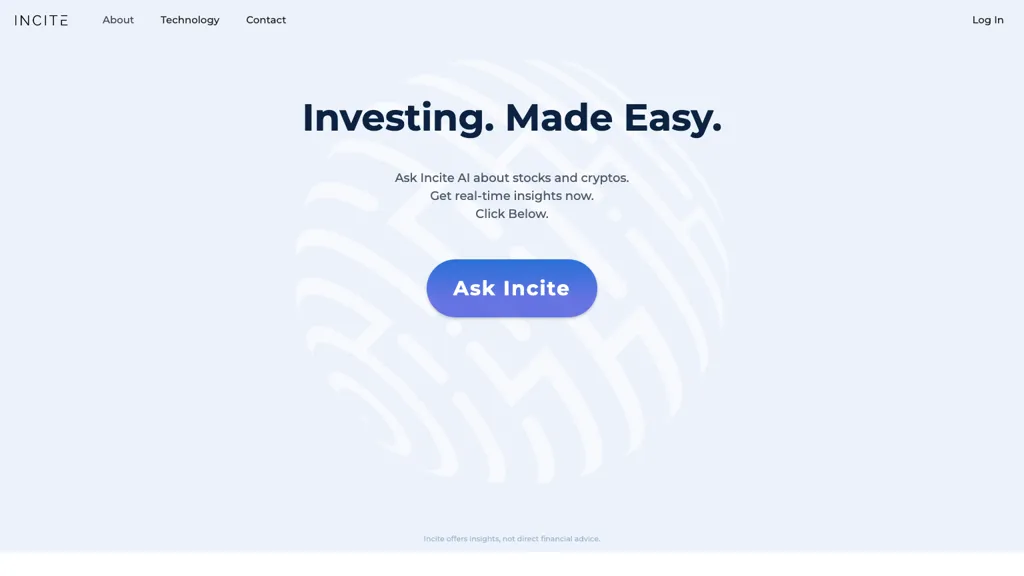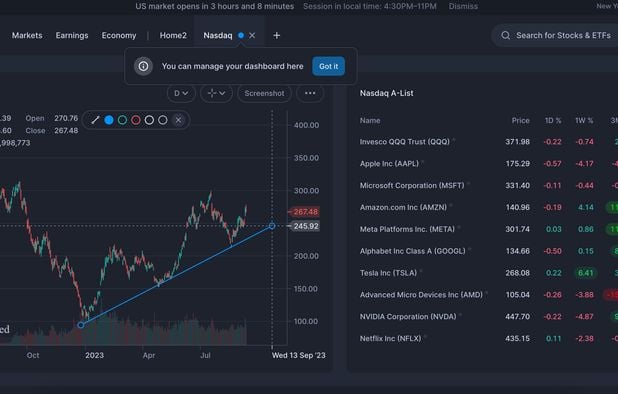20 Great News On Choosing AI Stock Trading Platform Sites
20 Great News On Choosing AI Stock Trading Platform Sites
Blog Article
Top 10 Tips To Assess Market Coverage Using Ai Stock Predicting/Analyzing Trading Platforms
Market coverage is among the most important factors to be considered when evaluating AI-based trading platforms. This will determine how many market and asset types are accessible. With a platform that offers comprehensive coverage, you can diversify your portfolio and make the most of opportunities across the globe. It is also possible to adapt to a variety of trading strategies. Here are 10 strategies to help you assess the market coverage offered by these platforms.
1. Evaluate Supported Asset Classes
Stocks: Make sure that the platform is able to cover major stock exchanges (e.g., NYSE, NASDAQ, LSE, HKEX) and includes small-cap large-cap and mid-cap stock.
ETFs: Find out if the platform allows a wide range of ETFs for diversified exposure to sectors, regions or even themes.
Futures and options. Check if the platform includes derivatives like options, futures, and other instruments leveraged.
The commodities and forex. Check to see whether there are any forex pairings available, as well as precious metals, energy commodities and agricultural commodities.
Cryptocurrencies: Verify if the platform works with major cryptocurrencies, such as Bitcoin and Ethereum, and alternative currencies.
2. Make sure you check the area of coverage
Global markets - Ensure that the platform has the capacity to provide coverage of all major markets across the globe which includes North America (including copyright), Europe, Asia-Pacific markets, and emerging ones.
Regional focus: Find out whether the platform is focusing on certain market segments or regions which match your trading preferences.
Local exchanges. Determine if the platform allows for regional or local exchanges pertinent to your area or business plan.
3. Think about comparing real-time data to delayed data Delayed data
Real-time Data: Be sure that the platform has real-time information for trading, and also for making quick decisions.
Data that is delayed: Find out if delayed data is available for free or at a cheaper cost, which may suffice for long-term investors.
Data latency. Check if the platform minimizes the time it takes to process real-time feeds particularly when it comes to high-frequency trading.
4. Assess the historical data availability
The depth of the historical data If the platform is available, ensure that it has ample historical data (e.g. 10, 10+ years) for backtesting and analysis.
Examine the precision in historical data.
Corporate actions: Check whether historical data reflects dividends, stock splits as well as other corporate actions.
5. Examine the market depth as well as order book data
To get a better price make sure that the platform has Level 2 information.
Bid-ask Spreads: Make sure that the platform displays real-time spreads for bid and ask for exact pricing.
Volume data: Ensure that the platform provides detailed information regarding volume that can be used to analyse market activity and liquidity.
6. Assess Coverage of Indices and Sectors
Major indices - Make sure your platform is compatible with major indices like the S&P 500 (e.g. NASDAQ 100 or FTSE 100), for benchmarking based on indexes.
Industry-specific data If you're looking to do a targeted analysis, see if there are data available for specific industries.
Customized indices. See if it is possible to create or track custom indices according to your own criteria.
7. Evaluation of integration with News and Sentiment data
Feeds for news: Make sure the platform has real-time feeds of news and information from reputable sources, such as Bloomberg and Reuters for events that affect the market.
Sentiment analysis Check to see whether your platform supports sentiment analysis tools using information from social media, news sources, or another sources of data.
Strategies based on events (e.g. earnings announcements or economic reports) Make sure that your platform supports trading strategies that are based on news events.
8. Check for Multi Market Trading Capabilities
Cross-markets trading: The system will allow trading on multiple markets or asset classes through a single interface for users.
Currency conversion: Make sure that the platform supports multi-currency accounts and automated currency conversion to trade internationally.
Time zone support: Determine if the trading platform is compatible with various time zones for global markets.
9. Examine the coverage of alternative sources
Alternative data: To gain unique insights, check if your platform uses other data sources (e.g. satellite imagery web traffic, satellite imagery, or credit card transactions).
ESG data. Verify whether the platform is stocked with socio-economic, environmental and governance data to support socially accountable investing.
Macroeconomics data: To conduct a an analysis of fundamentals, make sure the platform contains macroeconomic indicators like GDP (gross domestic product) inflation rates, GDP and interest rate.
Review Feedback from Customers and Market Reputation
User reviews: Read user reviews to determine the platform's market coverage Usability, reliability, and coverage.
The reputation of the market: Find out if there are any award-winning experts or awards that recognize the platform's broad coverage of markets.
Case studies and testimonials They will showcase the platform's performance in specific market segments or asset classes.
Bonus Tips:
Trial period - You can use the demo or trial for free to test the market coverage and data coverage.
API access Check whether the API of the platform supports an analysis that is custom made using market data.
Support for customers. Check that the platform provides assistance for data or market related inquiries.
These guidelines will assist you assess the market coverage provided by AI trading platforms that forecast or analyze price movements of stocks. In this way, you'll be able to select the platform that provides you with the data and markets that you require to be successful in trading. You can broaden your portfolio and take advantage of new opportunities using a broad market coverage. See the recommended ai investment platform blog for site advice including ai for trading, market ai, ai investing platform, chatgpt copyright, ai for investment, ai for stock predictions, ai stock market, ai stock trading app, ai for trading, ai investing app and more.
Top 10 Tips For Assessing The Scalability And Accuracy Of Ai-Based Stock Trading Platforms
Scalability is a key aspect in determining if AI-driven platforms that predict stock prices and trading are able to handle growing demand from users, increasing volume of data and market complexity. Here are the top 10 methods to evaluate scalability.
1. Evaluate Data Handling Capacity
Tips : Find out whether the platform has the ability to analyze and process large datasets.
Why? Scalable platforms have to handle growing data volumes without performance degradation.
2. Test the capabilities of a Real-Time Processor
See how the platform handles live data streams, such as price movements and breaking news.
What is the reason? Trading decisions that are real-time require analysis of data in real-time. In the event of delays, it could result in missed opportunities.
3. Cloud Infrastructure Elasticity and Check
Tip: Determine whether the platform utilizes cloud-based infrastructure (e.g., AWS, Google Cloud, Azure) and has the ability to scale resources in a dynamic manner.
Cloud platforms provide elasticity, allowing the system to scale up or down according to demand.
4. Algorithm Efficiency
Tip: Determine the efficiency of AI models utilized to make predictions (e.g. Deep Learning or Reinforcement learning).
Reason: Complex algorithms can be resource-intensive, and optimizing them is essential to scaling.
5. Examine Distributed and Parallel Computing
TIP: Find out if the platform uses parallel processing or distributed computing frameworks (e.g., Apache Spark, Hadoop).
What are they: These technologies speed up the processing of data and allow for analysis across many nodes.
Review API Integration and Interoperability
Test the platform’s ability to incorporate APIs from other sources.
What's the reason? Seamless Integration makes sure that the platform is able to adapt easily to new data sources, trading environment as well as other aspects.
7. Analyze User Load Handling
You can simulate the high user traffic and see how the platform responds.
The reason: A platform that is scalable must be able to maintain its performance as the amount of users increase.
8. Assessment of Model Retraining and Adaptability
Tips Check how often the AI models can be trained on new data.
What's the reason? As markets shift the models need to be updated frequently to stay accurate.
9. Verify Fault Tolerance and Redundancy
TIP: Make sure your system has failover and redundancy features to handle hardware or software issues.
Why is that downtime in trading is costly, which is why fault tolerence is important to ensure scalability.
10. Monitor Cost Efficiency
Tip: Consider the cost of scaling your platform. Be aware of cloud resources such as storage for data and computing power.
Why: It's important to keep a balanced equilibrium between the expenses and performance costs.
Bonus tip: Future-proofing
Check that the platform incorporates the latest technology (e.g. quantum computing and advanced NLP) and can adapt to changes in the regulatory environment.
If you concentrate your focus on these elements it is possible to accurately evaluate the scalability AI prediction and trading platforms. This guarantees that they will be robust and efficient and ready for further growth. View the top ai tools for trading hints for more advice including ai trading tool, ai stock investing, free ai tool for stock market india, free ai stock picker, stock trading ai, chart analysis ai, can ai predict stock market, ai in stock market, ai copyright signals, stock predictor and more.